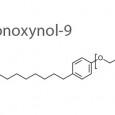Men are frequently concerned about their penile size. However, testicular size appears to play a more significant role in male health. After all, it is an organ that mainly produces the male hormone testosterone and sperms.
There could be different changes in testicular size. It may appear larger than usual or smaller. Generally, the greater concern is their smaller size, as it may mean low testosterone and infertility.
Changes in testicular size may also cause other health issues, as testosterone plays an important role in regulating metabolism and mood.
Disclaimer: condom-sizes.org is supported by its readers. When you buy through links on our site, we may earn an affiliate commission. Learn more.
Average testicular size
Every man has two testicles, and the average size is around 4 x 3 x 2 centimeters (cm). This is the average size for adult men. However, testicles may be larger or smaller than this. Experts think that a testicle size of less than 3.5 centimeters or 1.4 inches may be considered small.
Testicles reside in the scrotum, which also contains the spermatic cord. The scrotum is a sac of skin hanging below the testicles, which is quite loose in adult men. However, since this skin enclosing the scrotum is relatively thin, thus measuring the testicle size does not pose a significant challenge.
Why does testicle size matter?
Testicle size does matter, as men with normal testicle size have higher sperm volume and better testosterone production. It means better male health.
Men with average testicle size are less likely to have issues like low libido or erectile dysfunction. Thus, a reduction in testicle size must be a cause of concern.
Here it is vital to understand that testicles produce more than 90% of testosterone. However, some of it is also produced by the adrenal gland.
However, more importantly, testicles produce sperms. Therefore, the smaller size is associated with lower sperm production and even infertility [1].
The medical term for small testicle size is hypogonadism. Men living with hypogonadism may have low sexual desire, less body hair, and growth of breast tissues.
However, larger than normal testicles are a rare condition, and it may instead indicate quite a different kind of health issue like the presence of fluid-filled sac around testicles, called varicocele. Varicocele is not a large testicle but rather an enlargement of the scrotum due to fluid accumulation.
There could be other reasons for scrotum enlargement, like an inguinal hernia. Thus, a sudden increase in scrotum size, which a person may confuse with a larger testicle size, always requires a medical examination.
When do testicles grow?
Testicles are pretty small at birth and are about one cubic centimeter. Therefore, the size of testicles does not change much during childhood. However, testicles start growing just before the onset of puberty. Their growth ensures increased testosterone production and the formation of male characteristics.
Once the testicle starts growing, males start developing various signs of masculinity. This includes changes in voice, growth of body hair, growth of hair on the scrotum, increase in muscle mass, and more.
Here it is also vital to understand that generally, the scrotum does not look symmetrical in most men. Quite often, one would hang more than another, which is absolutely normal.
Shrinking of testicles
Shrinking of testicles leading is not uncommon. It may also occur due to aging. However, if it occurs due to aging, any such shrinking is relatively minute and barely noticeable. It occurs during the period of years, resulting in an age-related decline in testosterone production, libido, and fertility [2].
However, a greater concern is a sudden shrinking of testicles that might occur within a few months. It may indicate something more severe.
Testicular atrophy causing shrinking testicles in young adults may occur due to sexually transmitted diseases like syphilis and gonorrhea. It may also occur due to certain chronic infections like tuberculosis. Sometimes, blunt trauma may also cause testicles to shrink.
Additionally, it is worth understanding that testosterone abuse and using anabolic steroids may also cause the shrinking of both the testicles. Anabolic steroid abuse causes a decline in intrinsic testosterone production due to negative feedback, and their prolonged use ultimately causes testicular atrophy leading to hypogonadism
Some men may also notice testicular shrinkage in cold temperatures. However, this is not a cause for concern, as it is not a shrinking of testicles but rather a contraction of the cremaster muscle. The body tries to keep testicles warm during cold temperatures by pulling them upwards.
Is it normal to have testicles of different sizes?
It is pretty common to have testicles of different sizes. Perfect symmetry is rare. Thus, the difference in the testicular size is not a reason for concern, unless one of the testicles has shrunk recently and become significantly smaller.
If one of both of the testicles shrinks considerably, it should always be a cause for concern, and one should seek medical advice.
Even more worrisome should be the visible change in testicle shape. It may be due to the formation of a lump or tumor, and some men may even develop testicular cancer.
Testicular cancer is readily treated; however, its timely diagnosis is essential to prevent metastasis.
Taking care of testicles
Fortunately, testicles do not require much care. However, this does not mean that one should neglect them completely. Regretfully, there are no medical guidelines regarding testicle screening and care. Nevertheless, it is good to self-examine them from time to time.
It is an especially good idea to regularly inspect your testicles if you are above the age of 30 years. One can inspect them for any changes in shape and size. One may do this by standing in front of the mirror.
Additionally, ensure that during the gentle examination, there is no unusual pain, swelling, suspicious lump, or other similar changes.
Conclusion
If you think that you have smaller testicles than an average man, it is a cause of concern. It can negatively affect growth, metabolism, libido, fertility, and more.
Equally worrisome is the sudden shrinking of testicles in men who had average testicle size. This indicates some underlying health issues. Similarly, changes in testicle shapes should be the cause of concern and seeking medical attention.
In adults, testicles would not become suddenly enlarged. However, if one feels that they are becoming prominent, it may indicate conditions like varicocele and even inguinal hernia. Both these conditions are treated surgically.
References
- Takihara H, Cosentino MJ, Sakatoku J, Cockett ATK. Significance of Testicular Size Measurement in Andrology: II. Correlation of Testicular Size with Testicular Function. The Journal of Urology. 1987;137(3):416-419. doi:10.1016/S0022-5347(17)44053-5
- Handelsman DJ, Staraj S. Testicular Size: The Effects of Aging, Malnutrition, and Illness. Journal of Andrology. 1985;6(3):144-151. doi:10.1002/j.1939-4640.1985.tb00830.x






 Dr. Preet Pal Singh Bhinder is a physician (M.D. Medicine) with a specialization in diabetes (Fellowship in diabetes, Royal Liverpool Academy). He is a lifetime
Dr. Preet Pal Singh Bhinder is a physician (M.D. Medicine) with a specialization in diabetes (Fellowship in diabetes, Royal Liverpool Academy). He is a lifetime